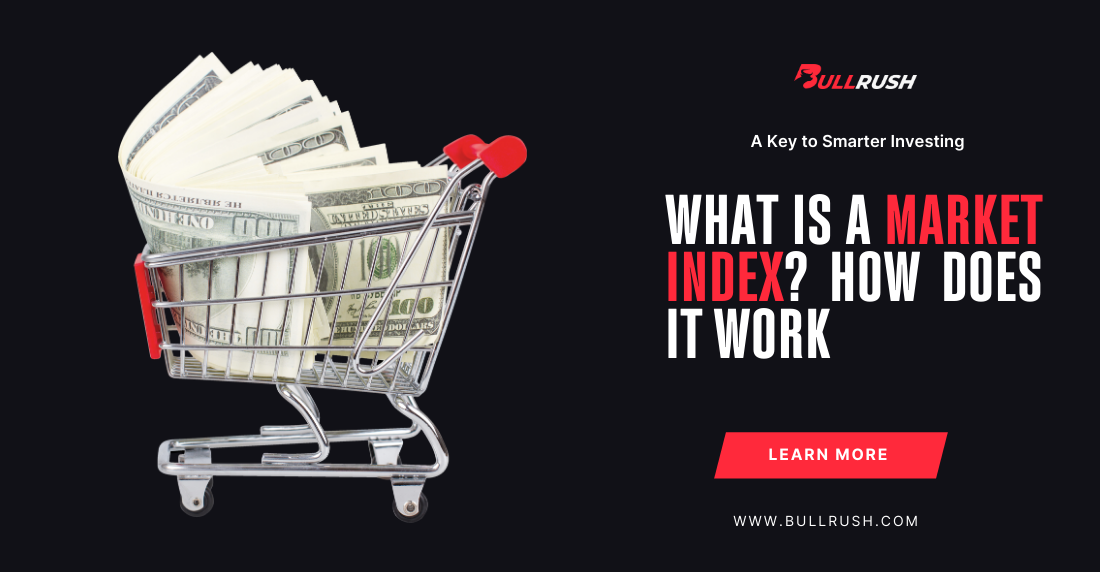
What Is a Market Index? A Key to Smarter Investing
A market index is a portfolio of investments that shows the performance of a certain stock market segment. It tracks market movements, assesses economic performance, and compares investment returns. Analysts and investors use indexes to monitor stock market movements and make educated decisions.
Understanding Market Index
Market indices are a barometer of economic health, investor sentiment, and market direction. They combine the price of selected securities to provide a snapshot of market performance. The most widely known indices track major economies, sectors, and asset classes, providing a glimpse into market segments.
The most important reasons investors and financial analysts utilize indices are:
- Market Analysis: Helps investors understand market cycles and trends.
- Portfolio Benchmarking: Allows comparison of individual investments to the overall market.
- Investment Strategy: Allows passive investment in index funds and ETFs.
- Risk Management: Allows diversification of portfolios and sector exposure balancing.
Since investors cannot sell or buy an index directly, they use exchange-traded funds (ETFs) or mutual funds that track the index composition to gain exposure to its performance.
Index Methodology
Different market indexes determine their values through specific calculations that measure each stock’s effect on the total index performance. Three basic methods exist to assign weight:
- Price based weights: The price based method gives bigger influence to stocks that cost more per share. In this method a company’s stock price gets added with others, then divided by a number that adjusts the total.
For instance in the Dow Jones Industrial Average, a stock at $300 affects the index more than one at $50, regardless of the company size.
- Market value based weights: The market value approach assigns more impact to companies based on their total worth in the market. This calculation takes the number of available shares times the price of each share.
As an example indexes like S&P 500 and Nasdaq Composite use this system. Major corporations like Apple, Microsoft and Amazon gain more influence because of their size.
- Equal weighted system: In equal weighted methods, each stock receives identical influence on the index movement, regardless of price or size. This creates balance between bigger and smaller companies giving each one similar power to move the index.
Through these methods indexes show different views of market behavior depending on which weight system they use.
Market Index Functions
It is true that market indices perform a very important function in all financial markets as such, not only for investors, but also for traders and analysts.
- Performance Benchmarking Investing directly in an index is not possible for investors, so instead they often use the same benchmark to see how well or badly their portfolios are performing in relation to others. This practice is especially common with mutual funds, hedge funds, and institutional investors. So for example, a mutual fund that invests in large U.S. corporations may use the S&P 500 to determine the fund’s performance regarding the average broader market.
- Investment Diversification Investors can also invest in indices as they give wider access to markets and hence different industries. Individual piece of equity reduces the risky part of investing. Rather than going with single stocks, most people prefer going for index funds or ETFs to track major market indices.Say for instance, someone wants to gain a diversified way into the U.S. stock market, and they would probably opt for an S&P 500 ETF, which spreads out their investment risk.
- Sector and Regional Investing: Indices enable investors to target a sector or geographic location. There are indices that follow technology stocks or healthcare and energy stocks, just as there are those tracking stocks for an entire region or country. For instance: The Nasdaq-100, composed of the largest non-financial stocks listed on the Nasdaq exchange, would therefore be the index to refer to when investors want to expose investment in more technology-focused sectors.
- Economic Indicators: The indices reflect in brief the entire economy. The rising indices talk about growth and confidence among the investors while the down indices signify the doubts about the economy. Example: A probably dropping Dow Jones Industrial Average could be said to represent concern regarding slow economy, inflation, or some geopolitical tension.
Major Market Indices Worldwide
United States:
- S&P 500 – Tracks 500 of the largest publicly traded American firms.
- Dow Jones Industrial Average (DJIA) – Consists of 30 blue-chip stocks representing a variety of industries.
- Nasdaq Composite – Consists of all Nasdaq-listed stocks, predominantly technology-oriented.
- Russell 1000 – The 1,000 largest U.S. stocks in terms of market capitalization.
- S&P 400 – Follows mid-cap U.S. companies.
Europe & UK:
- FTSE 100 – Follows the 100 largest UK companies on the London Stock Exchange.
- DAX – Follows 40 major German companies.
- CAC 40 – Represents the 40 largest French companies.
Asia:
- Nikkei 225 – Price-weighted index of 225 prominent Japanese shares.
- Shanghai Composite – Tracks stocks traded on the Chinese Shanghai Stock Exchange.
- NIFTY 50 – Reflects the performance of the 50 biggest listed firms on India’s National Stock Exchange (NSE).
How Investors Use Market Indices
- Passive Investing through Index Funds: The majority of investors take passive investing approaches by purchasing ETFs or mutual funds that follow major indices. It is diversified, low-cost, and has steady long-term performance.
- Trading & Speculation: Indices are also utilized for speculation by traders through futures, options, and leveraged ETFs. Such vehicles allow investors to bet on direction of price in the marketplace without taking positions in the underlying shares.
Example: A long-term investor can buy S&P 500 futures if he is bullish on the market, and a short-term investor can short-sell a Nasdaq ETF.
- Portfolio Risk Diversification & Management: Investors diversify risk by investing in different indices, diversifying their portfolio in equities, bonds, and foreign markets.
Final Thoughts
Market indices are more than just numbers—they’re a roadmap for investors. Whether you’re measuring your portfolio, diversifying your investments, or trading market trends, indices play a crucial role.
For long-term investors, index funds offer a simple way to build wealth. For traders, they provide endless opportunities to profit from market movements. And for everyday market watchers, indices reveal where the economy is headed.
BullRush offers the best trading challenges for high-reward environments to better your trading skills. In contrast to conventional prop firm challenges, which carry the pressure of managing firm capital, BullRush allows for a gamified environment to test your trading strategies without risking real capital. Join BullRush, you can practice in real market conditions, refine your trading approach today!



